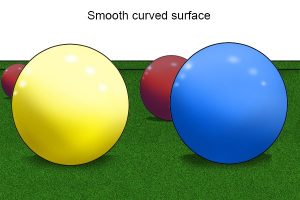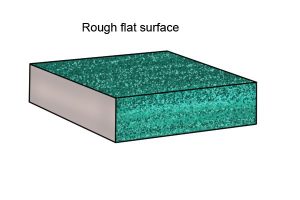What is the difference between flat and smooth?

A surface can be flat but not smooth or smooth but not flat. A sanding block has a flat surface for sanding, but would not be described as having a smooth surface as the grit particles make it rough. Likewise, a snooker ball has a smooth surface but is certainly not flat.

When a surface is scraped flat it means that no one area is sitting higher than another; in other words, all the high spots are at the same height and evenly spaced out over the surface, not that it is smooth.
Is it possible to ever get a completely flat surface?

The flatness of a surface is measured by the difference between the highest and lowest points over the length of the surface. Any flat surface looked at under the microscope will have a degree of mountains and valleys. Even grade 0 reference surface plates are not completely flat.

As the workpiece rests on the reference plate, it sits on the high spot areas. As these high spots get scraped away with each scraping, more of the workpiece will be in contact with the reference plate and so more high spots will be visible.

Under the microscope, the high spots on a workpiece look like mountains. The red high spots that are visible after the first rub are removed down to the blue level by the first scraping process.
The blue high spots will be visible after the second rub and are removed down to the pink level during the second scraping process. This will then leave the pink high spots visible after the third rub, which are removed by the third scraping process, leaving the workpiece flat.






